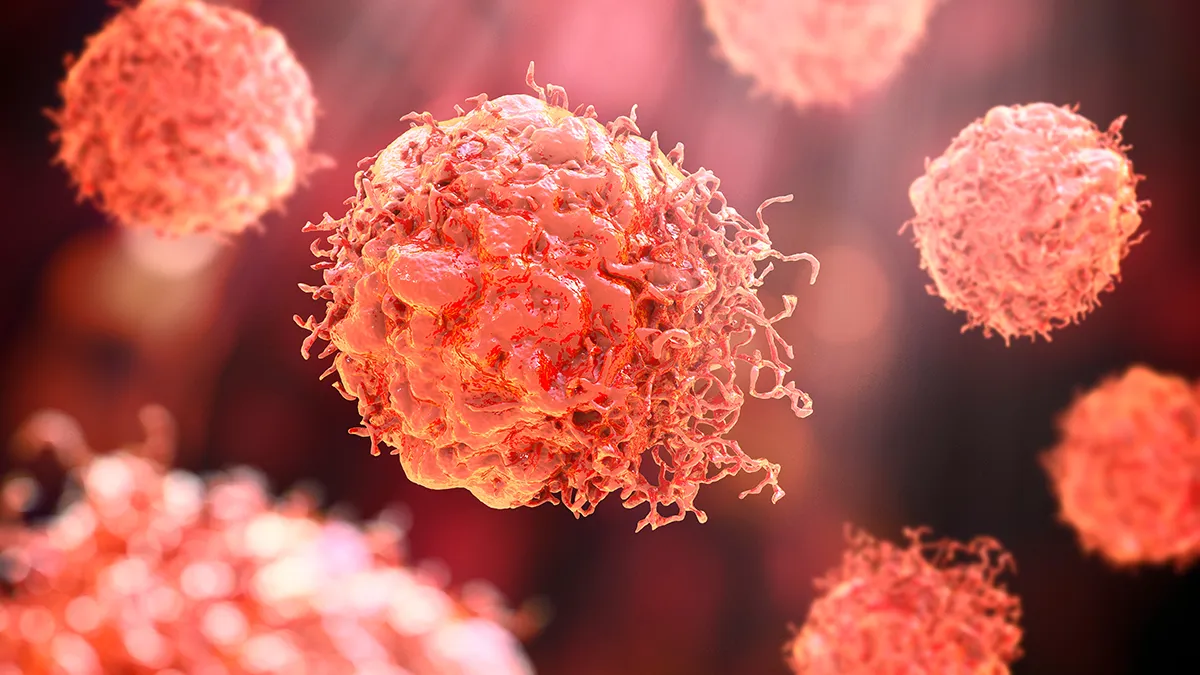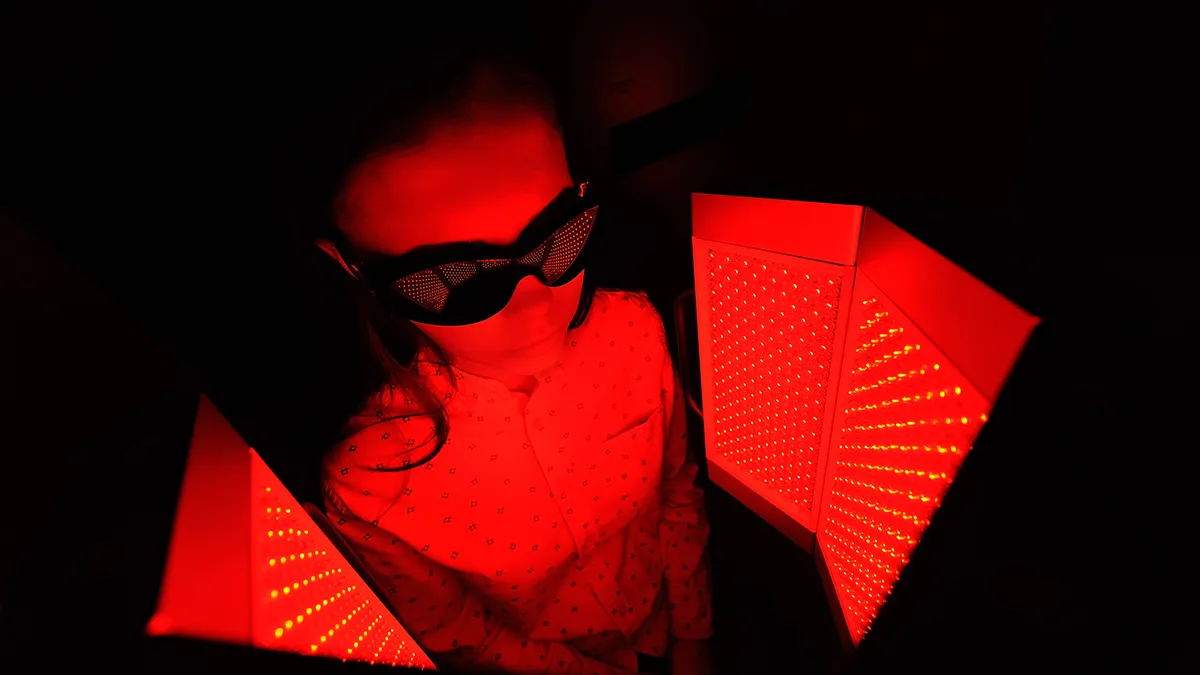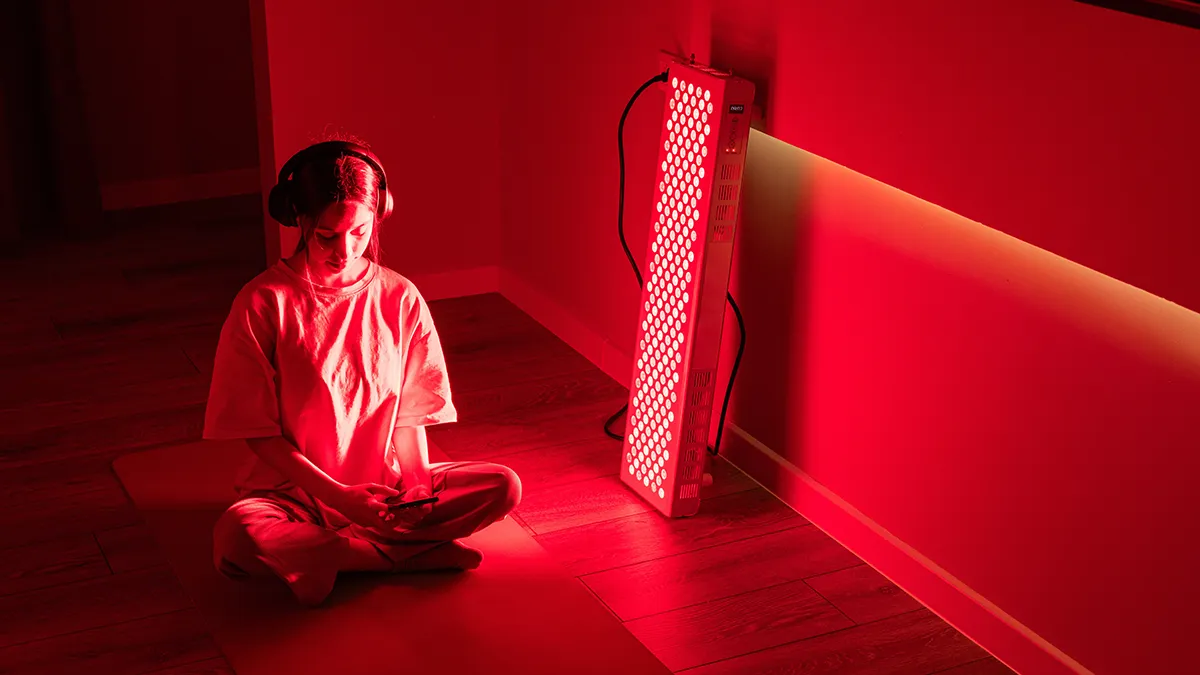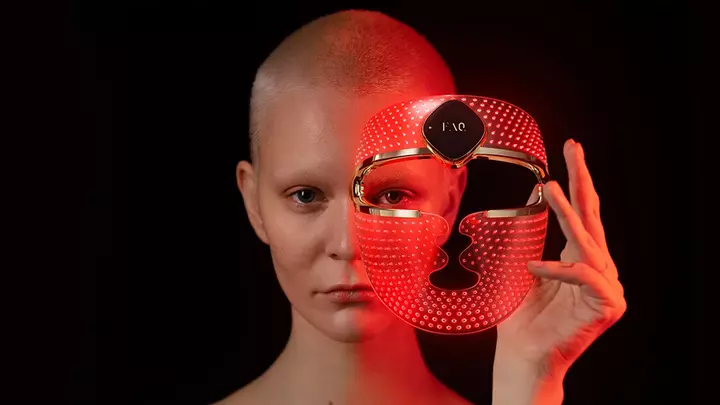8 min read
Photon Fear Factor: Can Red Light Therapy Cause Cancer?

We're beings of light, energy, and air who have learned to live in symbiosis with all this planet has to offer. Our body is designed to produce (and depend on) its own electricity and to coexist with the light generated by our very own personal star, responding to the Sun's smorgasbord of wavelengths in various ways. But light is not just what helps us not to step on a Lego at night. There are various types of light; the sun, a tanning bed, an iridescent lightbulb, a candle, or an LED panel are not the same.
As we left our hunter-gatherer ways and advanced to our contemporary state, we have never been as satiated by the comforts of daily life, yet we've also never been as much at risk of disease. Sure, our ancestors might have feared dying from an infected cut or being eaten by a bear, but we're plagued (how appropriate) by diseases arising from a broken metabolism, cell mutation, and chronic stress and inflammation, causing the monstrous number of cardiovascular disease, type 2 diabetes, and cancer, including the insidious, weird mole-masquerading skin cancer, melanoma.

We've long been aware of the therapeutic potential of red light. The beginning of the 20th century even saw the awarding of Nobel prizes for the success of photobiomodulation (the therapeutic use of light in living systems) in treating tuberculosis lesions. The science leaped ahead. The red light therapy (RLT) we know and use now for medical and aesthetic purposes actually started as a possible cure for cancer, but showed more promising results in tissue recovery, wound healing, reducing inflammation, and hair regrowth. Fast forward to NASA labs that explored its effects to help grow plants and heal wounds faster on space stations, and the proliferation of the technology into first dermatologist clinics, all the way to the miniaturized versions of skincare LED devices on your aunt's bathroom shelf. LED light therapy promises skin rejuvenation, faster healing, and a glow that suggests you've slept eight hours, drank enough water, and basically have your life together while sinking deeper into adulting.
But the popularity and wide use of at-home LED light therapy bring with it the gnawing and serious questions in the back of everyone's mind: Can red light therapy cause cancer? This is a legit question, but we far prefer facts to fear. So, let's examine the studies to see if red light therapy can cause melanoma (skin cancer) or any other type of this disease.
Does Red Light Therapy Cause Cancer?
A short answer for you impatient, drive-by guerrilla Googlers: No, the body of current scientific evidence does not support that red light therapy causes skin cancer. The American Academy of Dermatology agrees that the research hasn't found red light to cause any type of cancer. Red LED light does not contain UV (ultra-violet) radiation, and is non-ionizing, therefore non-mutagenic to the cells.
What is the difference between ionizing vs. non-ionizing radiation?
- Ionizing radiation would encompass the spectrum parts like UV rays and X-rays. Not so dangerous in small doses. But because they are high energy, these can damage DNA, mutate cells, and increase cancer risk. This is why you wear SPF to protect yourself from the UV rays, and why you'll always be asked about possible pregnancy when going for an X-ray.
- Non-ionizing radiation is wavelengths such as red light, near-infrared , infrared, or Wi-Fi, which are low energy and cause no DNA damage. However, some of these can be used within a "therapeutic window" to intentionally stimulate tissues for the purposes of healing or rejuvenation.
So, no fear. Red light therapy falls squarely into the non-ionizing radiation camp, and the FDA classifies RLT devices as low-risk. So, to address a scary-sounding claim floating around community forums: No. Red light therapy doesn't cause cancer cells to grow. It stimulates normal, healthy cells that have become sluggish in energy production, allowing them to function better. Stimulation is not the same as uncontrolled growth.

The word "cancer" itself is so ton-of-bricks emotionally charged for all who've been touched by the beast. The loss of life quality or life itself cuts deep and sows fear; therefore, the question of the safety of new technologies is of utmost importance. The "do no harm" principle reigns supreme above all others in a responsible society and scientific apparatus, which is why we need to discuss cancer and red light therapy.
The best way to describe a cancer cell through a new metabolic paradigm is that it is selfish. It is not a team player, like cells in multicellular organisms, where these have learned to work together for the benefit of their neighbors and the entire organism. A normal, healthy cell produces energy by burning oxygen and nutrients, such as carbohydrates, fats, and protein (to be fair, protein is used mainly to build new structures and repair existing ones). A cancer cell, on the other hand, is a regression to an older cellular mechanism where the cell ferments sugars (and, as we now know, the amino acid glutamine) to gain energy. It grows only for growth's sake, gobbling up more and more. Cancer cells have ten times more glucose receptors than normal cells, and we can find them by following the glucose consumption, which may be the reason why fasting and keto diets are linked to better cancer outcomes.
Therefore, it is logical that anything that helps OXPHOS (oxidative phosphorylation) produce more ATP, such as red light therapy, would hinder the regressed cancerous cell's mode of operation. However, red light alone is not enough. It should be paired with contemporary medical treatments aimed at the complete annihilation of the cancer cell, and hopefully, new therapies that will also prevent these rogue cells from accessing glutamine.
What Is Red Light Therapy and How Does It Work?
If you're more into the deep understanding, you can find more on the science of red light therapy here, but for our purposes here, this quick intro will do.
Red light therapy goes by many names (over 60 in the literature), such as photobiomodulation, low-level light therapy (LLLT), cold laser therapy, biostimulation, and many more. It is a non-invasive therapy that may help improve acne, fine lines, wrinkles, alopecia, and other skin and health conditions like inflammation, cuts and scars, burns, fertility, eye health... When it comes to skin healing, collagen production boost, and rejuvenation, red and near-infrared LED therapies have shown the most promise, while a combination of blue and red light seems to be the best choice for acne treatment.
Rejuvenating wavelengths fall into the red spectrum between 630 and 700 nm, and NIR light therapy between 700 and 1100 nm. Red light is a more superficial therapy that primarily targets the skin and tissues immediately below the skin, and it is best for skin rejuvenation, wound healing, and acne. NIR lights penetrate deeper into the body, reaching muscles, joints, and bones, and these are more suited to pain relief, inflammation, and muscle and bone recovery. Still, LED light therapy in all these wavelengths has a remarkable capability to stimulate mitochondria in the right dose, the microscopic powerhouses of the cell that produce ATP, the energy of life. This will boost ATP production, meaning improved function of the organs and tissues the cells belong to.
Red light therapy, or NIR, will not mutate anything (unlike overexposure to UV light), but rather stimulate normal cellular function that slows down with aging or injury. It will not turn cells into rogue, selfish villains that destroy the host by an unsustainable logic of growth, but may help you heal after micro needling or surgery. So blaming red light for the UV damage is like blaming that chamomile tea you've had last week for what the flaming tequila shooters did to you last night – it's unfair and wrong. This does not mean you shouldn't get sunshine, but it means that if you've been in the sun for over 15 minutes without protection, it may be time to seek some shade or put on a wide-brimmed hat or a Bedouin-inspired covering garment.

The short story:
- Red light therapy does not cause cancer
- It does not stimulate cancer cell growth
- It's non-ionizing and is FDA-cleared
- It's used therapeutically in both dermatology and oncology
But like most good things (coffee, retinol, cats, black jumpsuits), it's not for everyone all the time, and don't let people tell you differently. Do your own research and ask your physicians about your particular and unique situation.
Red light therapy dangers for existing skin cancer or lesions?
A very good question that needs attention and is a legitimate concern. If red light therapy stimulates cells, it is conceivable it would stimulate all cells, including the cancer cells we'd like to kill with treatments like chemotherapy.
The science of RLT indicates that there's no evidence to suggest that red light therapy worsens or activates existing cancer. In fact, it's sometimes used after cancer treatments to help skin regenerate, and there are some preclinical studies, such as this 2022 in vitro study, exploring quite the opposite – red light therapy potential in treating melanoma for people who don't respond to immune or targeted therapy.
Still, science is very reluctant to accept something as a fact before a great deal of evidence confirms and reconfirms the result. This means that it is wise to check with your doctor if you have some preexisting conditions or are using photosensitizing medication, not out of fear, but common sense caution. Who should consult a dermatologist before adding red light therapy to their routine?
- People with active cancer
- Individuals with pre-cancerous skin lesions
- Anyone with photosensitivity or on photo-sensitizing medications
- Those recovering from recent skin cancer treatments
Medications you should be careful about pairing with red light therapy and should ask your physician about include antibiotics (like doxycycline and ciprofloxacin), some NSAIDs (like ibuprofen), certain SSRI antidepressants, some antifungals, diuretics, antihypertensives, acne medications, like isotretinoin, and some chemotherapy drugs, like methotrexate.
FAQ lightning round
Is red light therapy safe after skin cancer surgery?
Yes, but consult your doctor. RLT may even support post-op healing.
Should I avoid red light therapy if I've had cancer?
Not necessarily. But always get clearance from your oncologist.
Does RLT affect moles or skin spots?
It doesn't appear to. Still, monitor changes and get regular skin checks, whether or not you use RLT.
Can red light therapy cause hyperpigmentation?
It can potentially worsen hyperpigmentation in darker skin tones. So, check with your dermatologist if it is right for you.
Conclusion
We are, at our most basic level, creatures of rhythm and light—always oscillating between sunlight and shadow, activity and rest, growth and repair. This is what the body was designed to do: continuously move and change while keeping the balance. Red light therapy taps into this ancient dialogue between light and life, not with brute force, but with a healing nudge to coax the cells into optimal function.
It's easy to see why the word "cancer" ignites fear in our hearts and why we're so cautious with letting new technologies and procedures into our hearts, but fear shouldn't cloud facts. Red light therapy isn't an untested fad, a new TikTok trend, or a quasy-scientific woo-woo. It is a gentle, non-invasive, but effective complement to medical and aesthetic routines, comprised of non-ionizing, non-mutagenic light.
So, can red light therapy cause cancer? No. But it can cause hope and improvements with basically no side effects. It's not about blind trust, because not all that is out there is of good quality, nor is it about fear, because caution with something as serious as cancer risk is smart. It's about understanding the spectrum, knowing what you specifically need and illuminating your path forward with data, curiosity, and proper professional guidance if necessary. We hope you've found the information collected here useful today. Stay healthy, curious, and beautiful, and enjoy living in your skin.








Comments
2 comments
Leave a comment